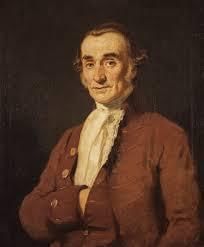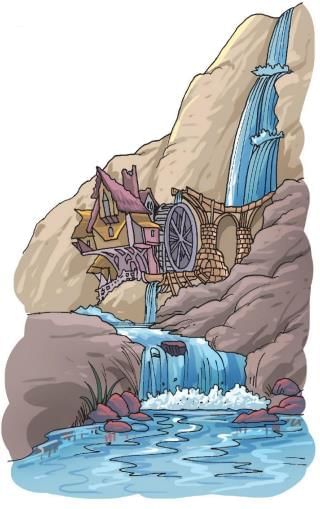Summary: The Miller of the Dee | English Class 6 ICSE PDF Download
| Table of contents |

|
| Introduction |

|
| Key Points of the Poem |

|
| Summary |

|
| Message |

|
Introduction
"The Miller of the Dee" is a poem written by Charles Mackay, a Scottish poet and journalist. This simple yet meaningful poem tells the story of a cheerful miller who lives a happy life by the river Dee. Through a conversation between the miller and King Hal, the poem explores themes of contentment, simplicity, and the true source of happiness. It contrasts the miller's joyful life with the king's sadness, showing that wealth and power do not guarantee happiness. The poem is written in a clear and engaging way, making it easy for young readers to understand its valuable lessons.
 Charles Mackay
Charles Mackay
Key Points of the Poem
- The poem "The Miller of the Dee" by Charles Mackay tells the story of a happy miller who lives and works by the river Dee.
- It shows how the miller enjoys his simple life, singing and working hard every day.
- The poem includes a meeting between the miller and King Hal, where the king learns about the miller's joy.
- It highlights the miller's contentment with his family, friends, and work, contrasting it with the king's sadness despite his power.
- The river Dee plays an important role by powering the mill that supports the miller's life.
- The poem teaches a valuable lesson about finding happiness in simplicity and love rather than in wealth or fame.
- It also explores the differences in the personalities and lives of the miller and the king.
Summary
Stanza 1
There dwelt a miller, hale and bold,
Beside the river Dee;
He worked and sang from morn till night,
No lark more blithe than he;
And this the burden of his song
Forever used to be:
I envy nobody - no, not I -
And nobody envies me!'
This stanza introduces a strong and cheerful miller who lives near the river Dee. He is full of energy and spends his days working at his mill while singing happily from morning until night. His happiness is compared to that of a joyful bird, showing how much he enjoys his life. The miller often repeats a line in his song that says he does not envy anyone and believes no one envies him, which shows his satisfaction with what he has.

Stanza 2
'Thou'rt wrong, my friend, said good King Hal,
'As wrong as wrong can be;
For could my heart be light as thine,
I'd gladly change with thee.
And tell me now, what makes thee sing,
With voice so loud and free,
While I am sad, though I am king,
Beside the river Dee?'
In this part, King Hal, who is feeling sad even though he is a king, meets the miller. The king tells the miller that he is wrong to think no one envies him. King Hal wishes he could feel as light-hearted as the miller and even says he would happily trade places with him. The king is curious and asks the miller what makes him sing so loudly and freely, especially when the king himself feels unhappy despite his royal status, as they both stand by the river Dee.
Stanza 3
The miller smiled and doffed his cap,
'I earn my bread, quoth he;
'I love my wife, I love my friend,
I love my children three;
I owe no penny I cannot pay,
I thank the river Dee,
That turns the mill that grinds the corn
That feeds my babes and me'.
The miller responds with a smile and takes off his cap to show respect. He explains that his happiness comes from earning his own living and loving his wife, friends, and three children. He is proud that he has no debts he cannot pay and is grateful to the river Dee. The river helps by turning the mill's wheel, which grinds the corn into flour to feed his family, making it a key part of his joyful life.
Stanza 4
'Good friend, said Hal, and sighed the while,
'Farewell, and happy be;
But say no more, if thou'dst be true,
That no one envies thee;
Thy mealy cap is worth my crown,
Thy mill my kingdom's fee;
Such men as thou are England's boast,
O miller of the Dee!'
King Hal listens and sighs, realizing the depth of the miller's happiness. He bids farewell to the miller, wishing him well, but gently corrects him by saying that many might envy his simple life. The king admits that the miller's dusty cap is worth more than his own crown and that the mill is more valuable than his kingdom. He praises the miller as a source of pride for England, showing great respect for the miller's way of life.
Message
The poem teaches that true happiness does not come from being rich or powerful, like a king. Instead, it comes from living a simple life, loving and caring for family and friends, and being thankful for what you have. The miller's life shows that being free of worries, such as debts, and appreciating nature, like the river Dee, can bring more joy than a crown or a kingdom.
New Words with Meanings
- Miller: A person who owns or works in a mill to grind grain into flour.
- Hale: Strong and healthy, full of life and energy.
- Blithe: Merry and carefree, showing a happy and light-hearted nature.
- Burden: A repeated line in a song or poem that carries its main message or theme.
- Thou'rt: An old way of saying "you are," used in the poem's language.
- Doffed: Took off or raised a cap as a sign of respect or greeting.
- Quoth: An old word meaning "said," used to introduce someone's words.
- Thou'dst: An old way of saying "you would," used in the poem.
- Mealy: Covered with meal, which is powdered grain, like flour dust.
- Fee: Here it means value or worth, not money.
- Boast: Something to be proud of, here used to describe the miller as England's pride.
|
38 docs|19 tests
|
FAQs on Summary: The Miller of the Dee - English Class 6 ICSE
| 1. What is the central theme of "The Miller of the Dee"? |  |
| 2. What message does the poem convey about wealth and happiness? |  |
| 3. How does the structure of the poem contribute to its overall meaning? |  |
| 4. What literary devices are used in "The Miller of the Dee"? |  |
| 5. In what ways does "The Miller of the Dee" reflect societal values of its time? |  |




















